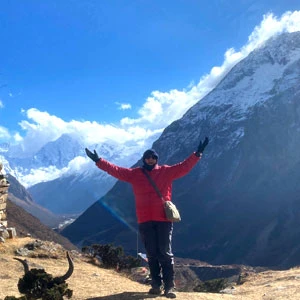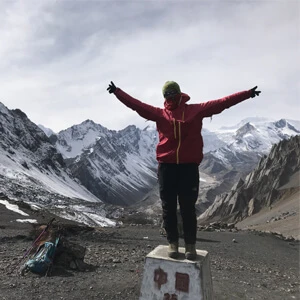Tsho Rolpa Trek Overview
The trek to one of the most mesmerizing glacial lakes, Tsho Rolpa Lake, is a captivating journey hidden in the hills of the Rolwaling Valley. A fun fact, Rolwaling Valley is known as one of the seven places in Nepal that is home to the mythical character “Yeti.”
While you will not get to witness a “Yeti” during the trek, the trails will promise to blow your mind. Well, you will walk through the untouched corner of the Himalayas past the verdant forests, terraced fields, alpine meadows, and glacial rivers.
Embarking on this journey will offer you an intimate experience in the Himalayas as you will rarely come across another trekker. Additionally, the Tsho Rolpa Trek is a blend of serene beauty, challenging terrain, and authentic culture unhinged by modern development.
As you arrive at the Tribhuvan International Airport, you will be greeted by the warm hospitality of your guide and transferred to your hotel. Your journey begins right from Kathmandu, where you will get a day to explore the bustling city. On the next day, your guide will pick you up from your hotel early in the morning, and you will take a quick drive to Jadibuti in Bhaktapur.
Here onwards, you will embark on a scenic drive through picturesque landscapes to Chhetchhet, where your trekking journey will truly begin. Well, this drive will offer a preview of what is on board with the views of terraced fields, lush forests, and rolling hills. As you reach Chhetchhet, you will start trekking to Simi Gaun.
Indeed, the initial journey brings the adventure to life as you make your way towards the heart of the Himalayas. With the continuous climb from Simi Gaun, you will come across various villages of the Rolwaling Valley. The journey takes you from Simi Gaun to Dongang, and then to Beding, all offering a glimpse into the local way of life.
Here, Dongang is located at the base of a hill offering panoramic views of the surrounding mountains. During your trek, you will walk through the banks of the Rolwaling River as you make your way past lush greenery, captivating waterfalls, and several suspension bridges.
From Dongang to Beding, you will encounter steep staircases, flat lands, and fields of wildflowers. As you reach Beding, you will find yourself in a tranquil setting, which will also be your home for the night.
Moving on, your stop at Beding is followed by another traditional village, Nagaon. For most of this trek, you will witness grasslands, rocky hills, and jaw-dropping views of the snow-clad mountains. From a lower elevation to a higher elevation village, you will clearly see a change in the landscape. The higher you climb, the more you will be rewarded with panoramic Himalayan beauties.
At the final stretch of the trek, you will make your way toward the Tsho Rolpa Lake, which is also the crowning jewel of the journey. Situated at an altitude of 4,580 meters, the lake is one of Nepal’s largest glacial lakes and offers a stunning display of nature’s beauty.
As you reach the Tsho Rolpa Lake, you will be in awe of the views of the clear blue lake surrounded by white snow-clad peaks on a rugged landscape. It will truly be a sight to behold.
Furthermore, if you are up for an extra journey, you can also visit the Dudh Kunda (4,700 meters). After exploring the lake, the trek continues with a descent back to Dokhang, a village that offers a different perspective of the landscape. Moving on, you will follow the trail to reach Chhetchhet and the final leg of the journey will take you back to Kathmandu.
Ultimately, the Tsho Rolpa Lake Trek is a perfect journey for anyone searching for thrill and serenity along the remote landscapes of the Himalayas. Whether you are captivated by the remoteness of the trek or the enchanting beauty of the Tsho Rolpa Lake, this journey will provide you with an unforgettable experience.
Tsho Rolpa High Altitude Trekking Difficulty
The Tsho Rolpa High Altitude Trek takes you through off-the-beaten-path and a variety of rugged landscapes, which makes the journey moderately challenging. During the trek, you will walk past lush forests, terraced fields, rocky paths, high-altitude terrain, and steep ascents, which demand both mental and physical endurance.
Typically, the Tsho Rolpa Lake Trek requires you to walk an average of 5 to 6 hours a day to cover around 12 to 15 kilometers. However, since the journey is relatively shorter than other treks and only takes you up to 4,540 meters in altitude level at Tsho Rolpa Glacial Lake View, even first-time trekkers can embark on the trek.
Overall, the mesmerizing Tsho Rolpa Lake and the breathtaking views of the mountain vistas in the backdrop act as a motivating factor for the trek.
Best Season for Tsho Rolpa Trekking
The best time to embark on the lower foothill of the Everest region the Tsho Rolpa is during the Spring (March to May) and Autumn (September to November). Due to the favorable weather conditions, mild and comfortable temperatures, and typically clear skies, these seasons provide an unobstructed panoramic view of the Himalayas.
Additionally, Spring and Autumn also provide the best views of the lake with crystal clear blue water and the breathtaking shadow and backdrop of the snow-clad mountain vistas. Furthermore, the long, warm days and cool nights make the trekking conditions much more favorable.
However, in contrast, the Summer brings heavy rainfall and the risk of landslides in the lower elevation level. Also, the trails get muddy and slippery, which is a big challenge for trekkers. Similarly, the Winter season brings freezing temperatures and heavy snowfall, making the trail difficult and less accessible. Due to this, the tea houses in this area may be closed for the season. Also, the Tsho Rolpa Lake can be frozen during the Winter, and the scenery may not live up to your expectations.
Overall, both the Monsoon and Winter seasons have little to no visibility due to the thick fog and rain clouds. Therefore, Spring and Autumn are the best seasons to fully appreciate the serene beauty of the Rolwaling Valley.
Tsho Rolpa Lake Trek Cost
Pure natural beauty, tranquil trails, and a manageable cost structure are a dream trip for many, and the Tsho Rolpa Lake Trek is just that! Well, this trekking package will cost you around 500 USD to 1000 USD, depending on the itinerary, service, group size, etc., which includes essential services such as permits, guides, meals, transportation, and accommodation.
While this cost covers all your basic expenses, it is wise to carry extra personal money for extra snacks, drinks, tips to guides and porters, buying souvenirs, or any additional gear you may need. Overall, the Tsho Rolpa Trek delivers exceptional Himalayan adventure in a cost-effective way.
Permits for an off-beaten path trek in Tsho Rolpa
For both the preservation of nature and to ensure a smooth and safe trek, you will require permits before embarking on this journey.
To start with, you will need a TIMS (Trekkers’ Information Management System) card to ensure trekker’s safety in remote areas. In addition to the TIMS card, you will also require a Gaurishankar National Park Permit to enter the protected area. Here, the TIMS card will cost you NRs 2,000 and NRs 3,000 for Gaurishankar Conservation Area Trekking Permit (GCAP) per person.
Both of these permits can be easily obtained from the Nepal Tourism Board, located in Bhirkuti Mandap, Kathmandu. When you go to get these permits, make sure to carry at least a passport-size photograph with you.
How can I book the Remote Trek to Tsho Rolpa?
To book your trek with us, you have to send a 10% deposit of the total cost. Please also forward a copy of your passport, a passport-sized photo, and full flight details if and when available. For your convenience, you may forward the deposit online through our website. It is completely safe, and as soon as you make it, you will get an automatic receipt in your inbox. The rest of the payment can be paid upon arrival.



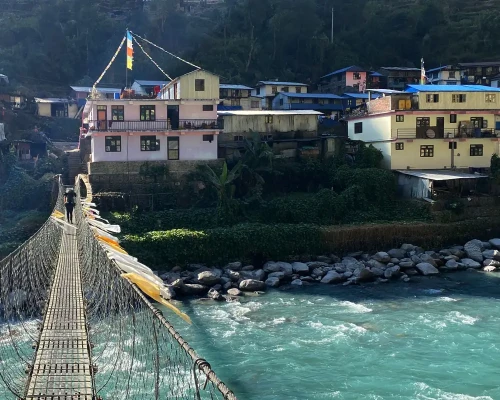
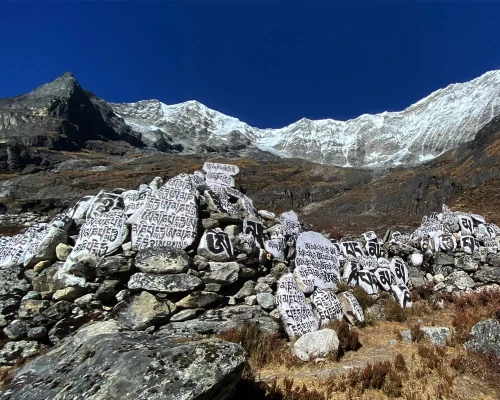
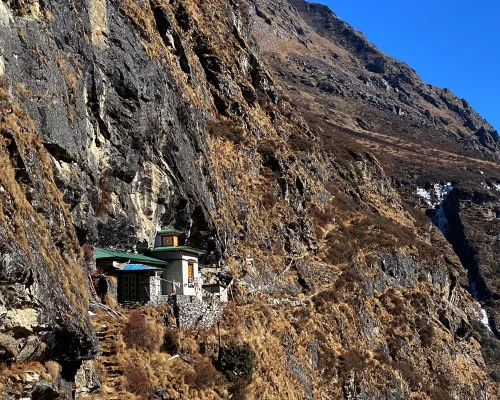
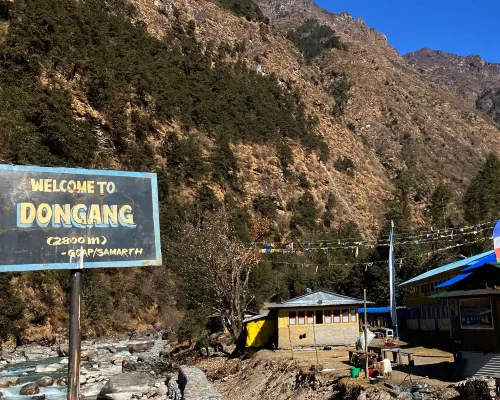

 based on 5 reviews
based on 5 reviews




